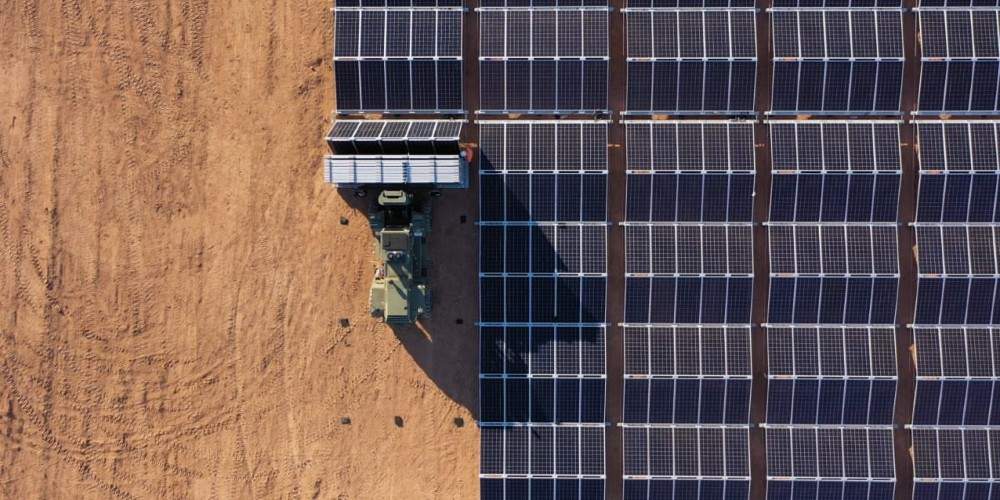Sun Cable, the company behind the world’s biggest solar project aiming to supply up to 15 percent of Singapore’s total renewable electricity needs annually, has entered voluntary administration.
The company had been backed by two Australian billionaires, Atlassian co-founder Mike Cannon-Brookes and former CEO of Fortescue Metals Group Andrew Forrest.
In a vague media statement on Jan. 11, the solar venture said it has “made the difficult decision to enter voluntary administration.”
The move will “unlock a path forward” for Sun Cable to “access additional capital for continued development of its marque project, the Australia-Asia Power Link (AAPowerLink).
The company describes AAPowerLink on its website as the world’s largest solar energy infrastructure project, which will harness solar energy from the Northern Territory, one of the sunniest locations on Earth.
The energy will then be supplied to Darwin and Singapore 24/7 through a 5,000 km transmission system.
“The appointment followed the absence of alignment with the objectives of all shareholders,” the company said.
“Whilst funding proposals were provided, consensus on the future direction and funding structure of the company could not be achieved.”
The solar venture has appointed global advisory firm FTI Consulting as its administrator, noting that FRI will work with Sun Cable and key stakeholders to “determine appropriate next steps for the business.”
“This will likely involve a process to seek expressions of interest for either a recapitalisation or sale of the business.”
Project Well Placed For Completion
David Griffin, founder and CEO of Sun Cable, said the company has made “extraordinary progress in developing the AAPowerLink”, which “remains well placed for completion.”
He maintained that the demand for delivering “reliable, dispatchable 24/7 renewable energy” in the Northern Territory and the region has “risen materially.”
Meanwhile, Cannon-Brookes, Chair of Sun Cable, said he was confident it will “play a huge role in delivering green energy for the world, right here from Australia.”
“I fully back this ambition and the team, and look forward to supporting the company’s next chapter.”
The collapse of Sun Cable comes despite the centre-left Labor government’s push for net-zero emissions by 2050, having committed $4.7 billion (US $3.2 billion) to fund renewable energy infrastructure in New South Wales in December.
“Recently, large-scale solar generation has begun rapid expansion. Large-scale solar generation has grown from negligible levels before 2016 to four percent of all Australian electricity generation in 2021, representing a five-year growth rate of 1,747 percent,” said the government’s climate change department on its website.
In Australia, rooftop solar PV systems remained the largest full-time equivalent employer among renewable energy types.
However, the share of renewable energy jobs has declined each year since 2012, according to the Australian Bureau of Statistics.
A 2021 report by the International Energy Agency found that “relatively high investment costs, lack of dedicated auctions and competition from solar PV and battery storage projects prevent the faster expansion of concentrated solar panel.”
Expensive Transition to Renewables
While renewable energy has been touted by the government as a cheap solution for climate change, a Canadian study found that if all costs are considered, wind and solar are actually more expensive to produce electricity and such a transition would be environmentally nonviable.
“When we look at the environmental impact of our energy systems, we have to look at the entire value chain,” the first author of the study Dr. Lars Schernikau said in SAGE talks in May. Schernikau is an energy economist and commodity trader.
“There is a production of raw materials that we have to consider. There’s the processing of raw materials that we have to consider. There’s the transportation of raw materials and products that we have to consider,” he said.
“Of course, there’s the actual operation, the combustion of materials, whatever we do with the production. And then there’s the recycling. So these are the main steps where we have to consider our environmental impact.”
Schernikau said there’re non-emission issues to consider as well, such as energy efficiency, material efficiency, space requirement, waste requirement, the effect on animal and plant life, and the effect on health and safety.
“Wind and Solar have zero CO2? Why? Because during combustion, they don’t produce CO2. But when you look at the entire value chain, they produce a lot of CO2,” said Schernikau.
Harry Lee contributed to this article. Cross-posted from our premium news partners at The Epoch Times.





